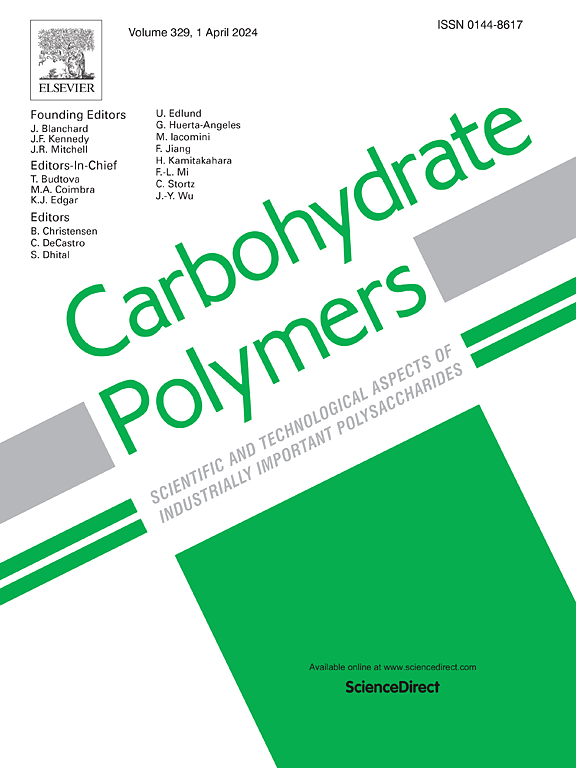Multiscale mechanical properties and enhancement mechanism of cellulose-composited hydrogels
IF 10.7
1区 化学
Q1 CHEMISTRY, APPLIED
引用次数: 0
Abstract
We prepared cellulose-composited ionic-covalent entanglement (ICE) network gelatin methacrylate/alginate (G/A) hydrogels using microfibrillated cellulose (MFC) and nanofibrillated cellulose (NFC), of which the mechanical properties were evaluated at two different length scales. Macro-compression shows that cellulose improves the toughness, compression resistance, and Young's moduli of ICE hydrogels, attributed to the synergistic interaction between the cellulose fiber network and ICE due to hydrogen bonding. Pure MFC (363.43 kPa) or NFC (325.75 kPa) alone, compared to a blend of the two with varied contents (261.5–288.5 kPa), displays a more pronounced improvement in the Young's moduli of ICE hydrogels, because homogeneous fiber networks enhance the structural integrity of the system. Micro-indentation reveals that hydrogen bonds between cellulose and ICE weaken the time-dependent deformation of cellulose-composited ICE hydrogel. Mapping of Young's modulus and hardness distribution of the hydrogel suggests that there are three forms of enhancement within cellulose-composited ICE hydrogel: cellulose fiber networks, ICE synergistic network, and synergies between cellulose fiber network and ICE. Creep results highlight that the excellent confinement effect of MFC contributes to creep resistance of cellulose-composited ICE hydrogels. In conclusion, the multiscale characterization unravels the mechanical reinforcing mechanisms of cellulose fibres in ICE hydrogels, which demonstrates the possible strategies for improving the mechanical properties of hydrogels.

求助全文
约1分钟内获得全文
求助全文
来源期刊

Carbohydrate Polymers
化学-高分子科学
CiteScore
22.40
自引率
8.00%
发文量
1286
审稿时长
47 days
期刊介绍:
Carbohydrate Polymers stands as a prominent journal in the glycoscience field, dedicated to exploring and harnessing the potential of polysaccharides with applications spanning bioenergy, bioplastics, biomaterials, biorefining, chemistry, drug delivery, food, health, nanotechnology, packaging, paper, pharmaceuticals, medicine, oil recovery, textiles, tissue engineering, wood, and various aspects of glycoscience.
The journal emphasizes the central role of well-characterized carbohydrate polymers, highlighting their significance as the primary focus rather than a peripheral topic. Each paper must prominently feature at least one named carbohydrate polymer, evident in both citation and title, with a commitment to innovative research that advances scientific knowledge.
 求助内容:
求助内容: 应助结果提醒方式:
应助结果提醒方式:


